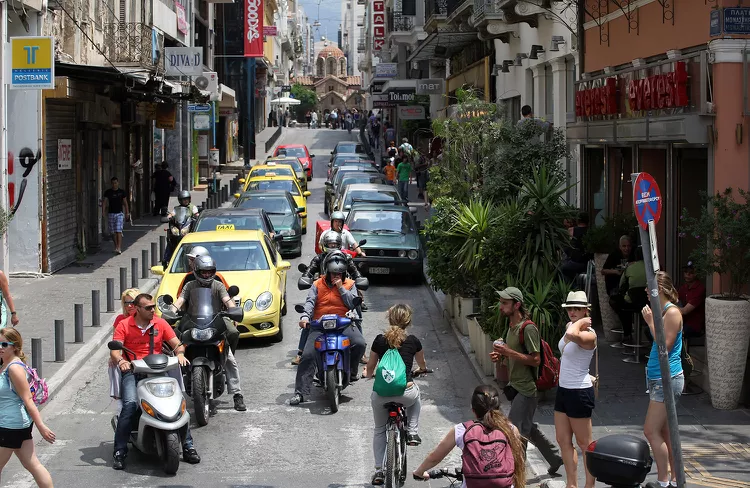Summary
Driving in Greece: Pros and Cons
There’s good and bad news about driving in Greece. On a positive note, most people have no trouble driving the main roads of Greece, with major roads leading to all the popular tourist destinations. Particularly good areas for road trips include the Peloponnese Peninsula and Crete.
However, the bad news is that Greece has the highest car accident rate in Europe. Therefore, if you’re an inexperienced driver, Greece’s roads may pose a challenge. Additionally, car rental fees and gas can be expensive, especially from an American standpoint. Given Greece’s mountainous terrain, many roads are curvy, and in late fall and winter, they may be wet, snowy, or icy. Moreover, traffic and parking in Athens can be particularly stressful.
If you still desire the freedom of exploring Greece by car, there are several reliable car rental companies available. Alternatively, if your trip is longer than a month, buying and later reselling a used car could be a financially viable option.
Renting the Right Car for Greece’s Landscape
For small groups, a minivan like the Nissan Serena is a solid option. However, note that while these vehicles can carry up to eight passengers, they often have limited luggage capacity. It would be wise to estimate around five or six passengers to ensure enough room for your luggage. If utilizing the vehicle for day trips, this might be less of an issue, though the journey to and from your accommodation may be cramped.
While four-by-four and off-road vehicles are popular among travelers, major international rental companies like Ace Car Rentals may not provide these options. Instead, consider booking through local companies like Kosmo’s Car Rental, which specialize in a variety of off-road touring SUVs, including brands like Jeep and Nissan.
If you prefer an automatic transmission, aim to rent an automatic vehicle, though they are comparatively scarce and pricier. Learning to drive a manual transmission for the first time on Greek roads is not advisable, as you may only find limited automatic options like the Opel Astra.
Costs, Insurance, and Associated Fees
When renting a car, it’s recommended to accept the offered insurance coverage. If you’re unsure whether your regular policy covers driving in Greece, it’s wise to confirm, as not all policies do. This mistake could lead to significant expenses if an issue arises.
The quoted rental price in Greece typically does not include the VAT tax of 18 percent and an additional 3 to 6 percent airport rental tax. To avoid surprises, budget an extra 25 percent for these costs. Additionally, during the summer months, expect to pay a daily premium ranging from $10 to $15 for rentals between June and September. The specific premium dates may vary by provider.
For travelers from the United States, the “mini” and “economy” style vehicles may be too compact for your needs. Therefore, choosing at least a “Compact” class vehicle will provide more comfort and space, although parking these larger vehicles may present its own set of challenges.
Many gas stations in Greece are part of the BP chain, known for their cleanliness, good facilities, and convenience items like snacks and maps. While you may encounter other brands like Silk and occasionally Shell along the highways, it’s essential to refuel when you see a station since they can be sparse and many may close on Sundays. If you’re having trouble locating a gas station, don’t hesitate to ask locals for directions; they are often quite helpful!




